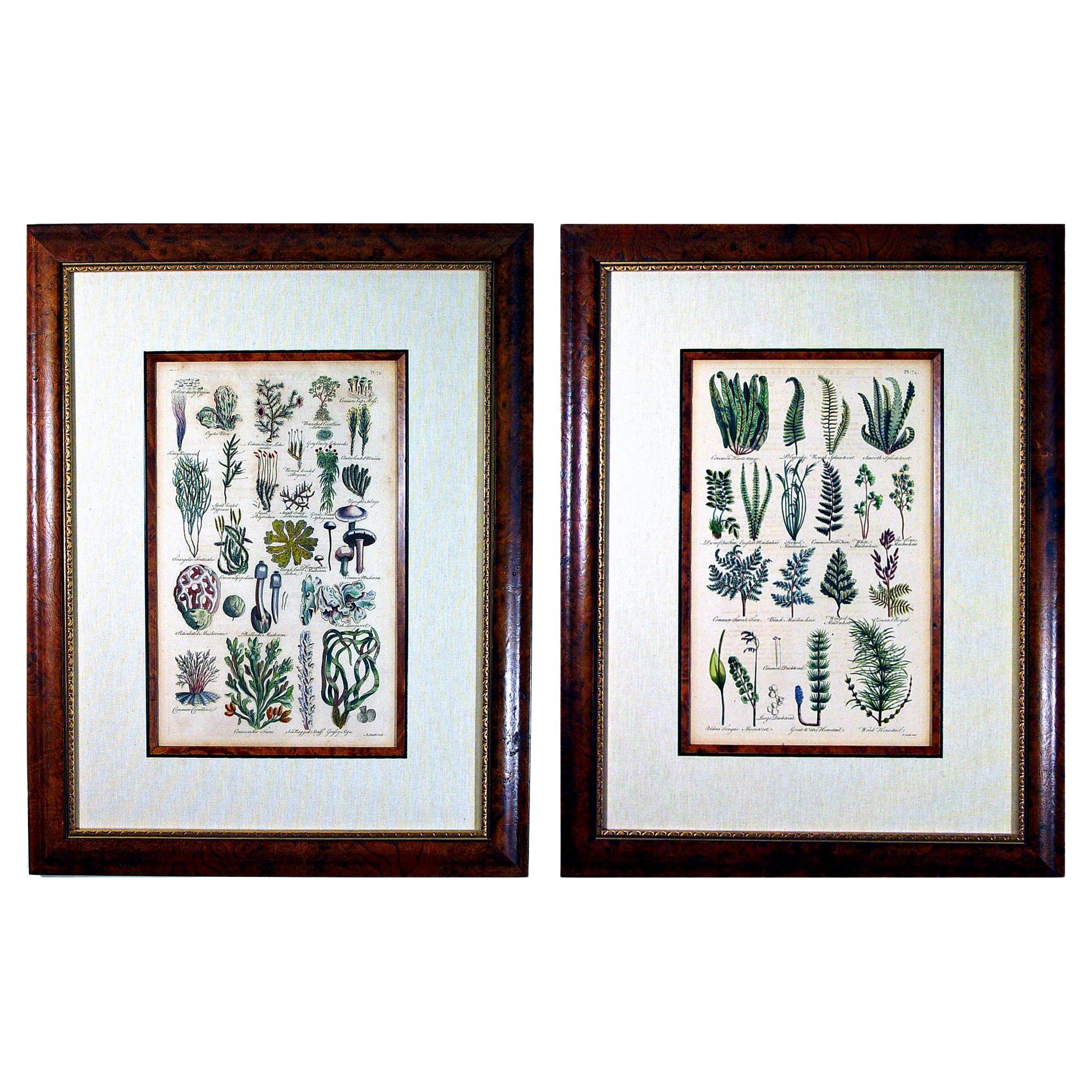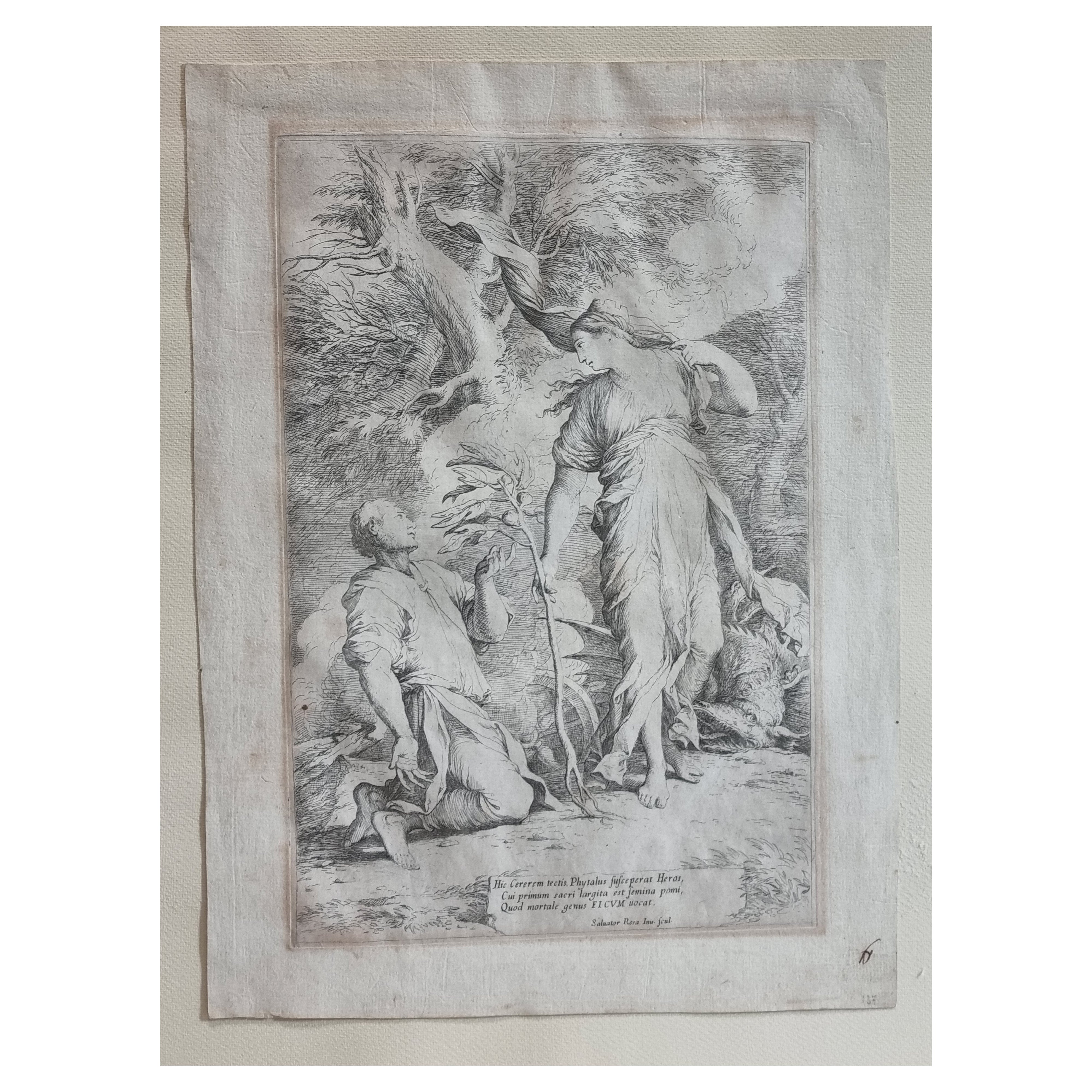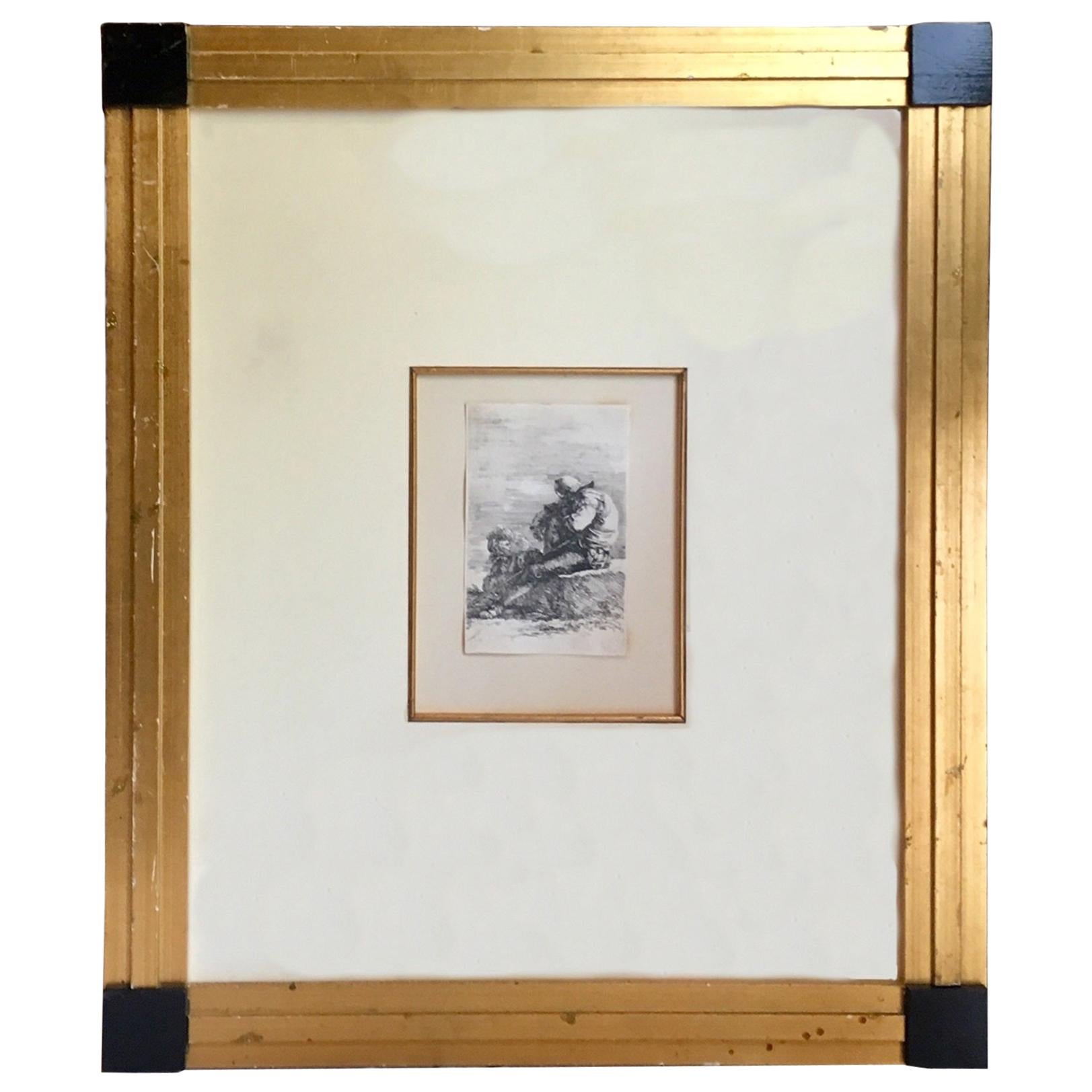Items Similar to 17th Century Pen and Ink Architectural Drawing Signed Bartolomeo Pedrelli
Want more images or videos?
Request additional images or videos from the seller
1 of 8
17th Century Pen and Ink Architectural Drawing Signed Bartolomeo Pedrelli
About the Item
17th Century Italian Architectural Drawing of a Palazzo which has been done with pen and ink with a grey wash. Signed on reverse by Bartolomeo Pedrelli of Molinella, near Bologna Italy. Circa 1740.
Framed and set behind museum glass.
- Dimensions:Height: 24 in (60.96 cm)Width: 29.75 in (75.57 cm)Depth: 1.5 in (3.81 cm)
- Style:Neoclassical (Of the Period)
- Materials and Techniques:Paper,Other
- Place of Origin:
- Period:
- Date of Manufacture:circa 1740
- Condition:Wear consistent with age and use.
- Seller Location:New York, NY
- Reference Number:1stDibs: LU6379229849272
About the Seller
5.0
Vetted Seller
These experienced sellers undergo a comprehensive evaluation by our team of in-house experts.
Established in 2015
1stDibs seller since 2022
7 sales on 1stDibs
- ShippingRetrieving quote...Ships From: New York, NY
- Return PolicyA return for this item may be initiated within 3 days of delivery.
More From This SellerView All
- Pair of Blue and White Chinese Porcelain Lamps, 20th CenturyLocated in New York, NYPair of Blue and White Chinese Porcelain lamps with Geometric Pattern. Gilded Bases. 20th Century. 7.5" Diameter of porcelain. ...Category
20th Century Chinese Chinoiserie Table Lamps
MaterialsPorcelain
- Pair Blue and White Chinese Porcelain Lamps w/ Dragon Motif 20th CenturyLocated in New York, NYPair of Blue and White Chinese porcelain lamps with Dragon Motif on gilded bases. 20th Century.Category
20th Century Chinese Chinoiserie Table Lamps
MaterialsPorcelain
- Pair of 19th Century Octagonal Chinese Blue and White Porcelain Garden SeatsLocated in New York, NYPair of 19th Century Octagonal Chinese Blue and White Porcelain Garden SeatsCategory
Antique 19th Century Chinese Export Benches
MaterialsPorcelain
- 18th Century Georgian Mahogany Triple Top Games Table with Ebony and SatinwoodLocated in New York, NY18th century Georgian mahogany triple top games table with ebony and satinwood inlay. Circa 1740.Category
Antique 18th Century English Georgian Card Tables and Tea Tables
MaterialsMahogany
- Pair Crackle Celadon Green Table Lamps w/ Foliate Motif 20th CenturyLocated in New York, NYPair of crackle Celadon green table lamps with Foliate Motif. 20th Century.Category
20th Century Chinese Chinoiserie Table Lamps
MaterialsPorcelain
- 18th Century English Mahogany Chinese Chippendale SetteeBy Thomas ChippendaleLocated in New York, NY18th Century English mahogany chinese chippendale settee. Circa 1780.Category
Antique 18th Century English Georgian Settees
MaterialsMahogany
You May Also Like
- 17th-Century Botanical Engravings of Mosses and Ferns By John ParkinsonBy John ParkinsonLocated in Downingtown, PAJohn Parkinson was the last of the great English herbalists and one of the first of the great English botanists. Here the pair of prints show mosses and lichen and the other of ferns. From: Paradisi in sole Paradisus Terrestris: or a garden of all sorts of pleasant flowers...Category
Antique 1620s English Jacobean Prints
MaterialsPaper
- 17th Century Etchingn and Drypoint" Ceres and Phytalus" by Salvator Rosa, 1662By Salvator RosaLocated in Cagliari, IT" Ceres and Phytalus" To left, Phytalus, kneeling, receives the fig tree from the goddess Ceres, standing to right, as a reward for his hospitality. Etching and drypoint, circa 1662...Category
Antique 17th Century Italian Baroque Prints
MaterialsPaper
- 17th Century "Diana's Deer and Boar Hunt" Etching by Antonio TempestaBy Antonio TempestaLocated in Cagliari, ITA fine mythological etching by the great Italian engraver Antonio Tempesta (Florence, 1555 – Rome, 5 August 1630) printed by François L'Anglois or Langlois (12 May 1589 (baptised) – 13 January 1647),also called F. L. D. Ciartres (" Francois Langlois from Chartres"). Beautiful sheet , very sharp . The dimensions below are inclusive of the frame, the print without the frame measures 27x19 cm Antonio Tempesta, also called il Tempestino (1555 – 5 August 1630), was an Italian painter and engraver, whose art acted as a point of connection between Baroque Rome and the culture of Antwerp. Much of his work depicts major battles and historical figures. He was born and trained in Florence and painted in a variety of styles, influenced to some degree by "Counter-Maniera" or Counter-Mannerism. He enrolled in the Florentine Accademia delle Arti del Disegno in 1576. He was a pupil of Santi di Tito, then of the Flemish painter Joannes Stradanus. He was part of the large team of artists working under Giorgio Vasari on the interior decoration of the Palazzo Vecchio in Florence. His favourite subjects were battles, cavalcades, and processions. He relocated to Rome, where he associated with artists from the Habsburg Netherlands, which may have led to his facility with landscape painting. Among his followers was Marzio di Colantonio. Tempesta and the Flemish painter Matthijs Bril were commissioned by Pope Gregory XIII to paint wide panoramas of the Procession to Transfer the Relics of St. Gregory of Nazianzus (1572) for the loggias on the third floor of the Vatican Palace. He completed frescoes in the Palazzina Gambara at the Villa Lante in Bagnaia (1578-1609). From 1579–83, Tempesta participated in the decoration of the Villa Farnese in Caprarola, notably of this villa's Scala Regia. He is also known to have collaborated on frescoes in the Villa d'Este at Tivoli and the Palazzina Gamara at Villa Lante, Bagnaia. He painted a series of turbulent and crowded battle scenes for the Medici. He also completed a series of engravings on outdoor courtly hunting scenes. Tempesta painted frescoes for the Palazzos Colonna, the Doria Pamphilj, and for the Marchese Giustiniani in his Roman palace, where Tempesta collaborated with Paul Bril, and at Bassano di Sutri. He painted a Massacre of the Innocents for the church of Santo Stefano Rotondo in Rome. Tempesta is now best known as a printmaker in etching and engraving. He also left numerous etchings, among them: Plates from the Old Testament; twenty-four plates from the Life of St. Anthony; a set of 150 prints from Ovid’s Metamorphoses; 13 plates on The Labours of Hercules and four plates on respectively The ages of man; The entry of Alexander into Babylon; Diana and Actaon, and The crucifixion (1612). In 1612 he engraved a series of plates under the title "Batavorum cum Romanis Bellum" after designs of the Netherlandish artist Otto van Veen, also known as Vaenius (1556-1629) and court painter to Alessandro Farnese. Van Veen was influenced by the Italian mannerists but had developed his own style anticipating the Flemish baroque of his pupil Peter Paul Rubens. The series consists of 36 numbered engraved plates and illustrates the armed struggle between the ancient Dutch tribes and their Roman oppressors as narrated in Tacitus' Histories. Each plate bears at the bottom an engraved legend in Flemish and in Latin while a detailed explanation is printed on the otherwise blank verso. Plate I, signed 'Ant.Tempesta f. Anno 1611', shows 'Roma' and 'Batavia' in battle dress with respective scenic backgrounds, symbolizing the two nations. Fifteen other plates bear Tempesta's monogram. The plates depict heroic events, sieges, and battle scenes. This historicist work was very popular in its time. Tempesta also drew many designs for tapestries. François L’Anglois or Langlois (12 May 1589 (baptised) – 13 January 1647), also called F. L. D. Ciartres ("François Langlois from Chartres"), was a French print publisher, print seller, engraver, bookseller, art dealer, and painter. He is widely considered to have been the first important print publisher in France and to have contributed significantly to spreading awareness of contemporary artists' work throughout Europe. François L’Anglois was born in Chartres and baptised there on 12 May 1589. He visited Italy on several occasions: Rome in 1613 and 1614 and Genoa, Florence, and Rome again in 1621. On these trips he met Anthony van Dyck and Claude Vignon, who both painted his portrait. He also became acquainted with the engravers Stefano della Bella and François Collignon. It was probably around this time that he acquired the nickname of Chartres (Ciartres in Italian). In 1624–1625 he was associated with Vignon as an art dealer (paintings) and acted as a print collector for Thomas Howard, 14th Earl of Arundel, and Charles I of England...Category
Antique 17th Century French Baroque Prints
MaterialsPaper
- Antique Print of French 17th Century Office, 'circa 1880'Located in Langweer, NLAntique print titled 'France XVIIth Cent - France XVIIe Siegle - Frankreich XVIIth'. Chromolithograph of French 17th century office. This print originates from 'Le Costume Historique...Category
Antique Late 19th Century Prints
MaterialsPaper
- Fine 17th Century Italian Etching by Salvator Rosa, 1615-1673By Salvator RosaLocated in Vero Beach, FLSalvator Rosa, the Italian Baroque painter was also a significant etcher and printmaker. Rosa’s is series of small prints of soldiers was very popular and influential. This etching i...Category
Antique 17th Century Italian Baroque Prints
MaterialsPaper
- 17th C. Column of Dilius & Obelisque Fountain Engraving Antonio Lafreri SpeculumLocated in Dayton, OH17th century (circa 1675) Roman naval column and fountain engraving. Publisher: Antonio Lafreri (French, Orgelet, Franche-Comte ca. 1512–1577 Rome) Portfolio: Speculum Romanae Magnif...Category
Antique 17th Century Neoclassical Prints
MaterialsPaper
Recently Viewed
View AllMore Ways To Browse
Neoclassical Architecture Framed
17th Century Italian Drawings
17th Century Neoclassical
Black Grouse
Woolwork Picture
Sicis Mosaic Panel
Framed Dried Botanicals
Doris Duke Collection
Birds In Flight Wall Art
Academie Homme
Plaster Cameo
Hermes Scarf Wall
Framed Herbier
Antique Cherub Wall Plaques
Majolica Wall Plaque
Appleton Brown
Retro Portuguese Tiles
Retro Portuguese Tile





